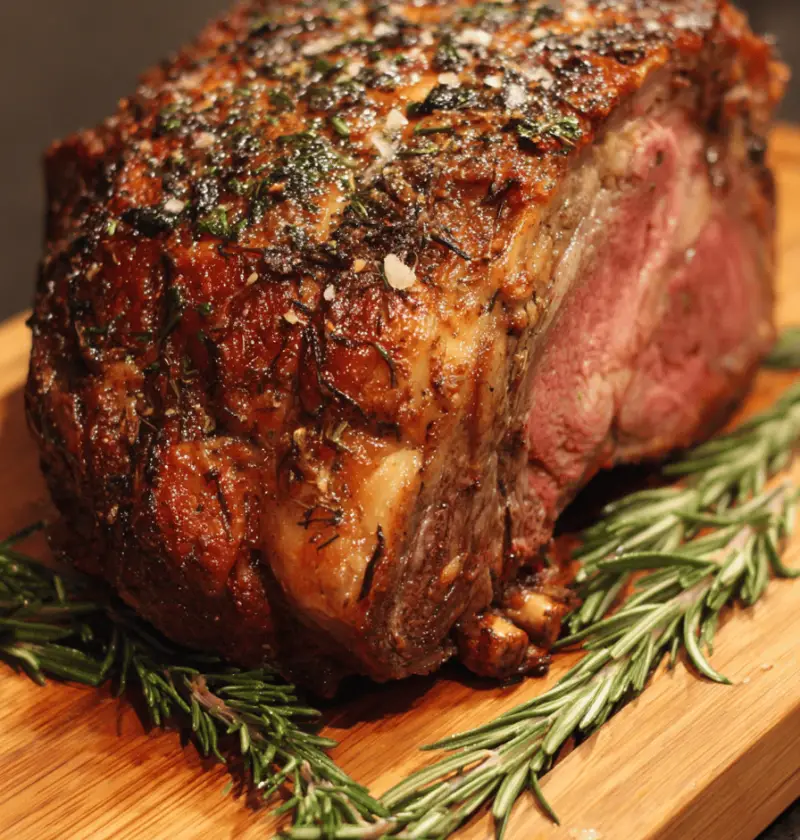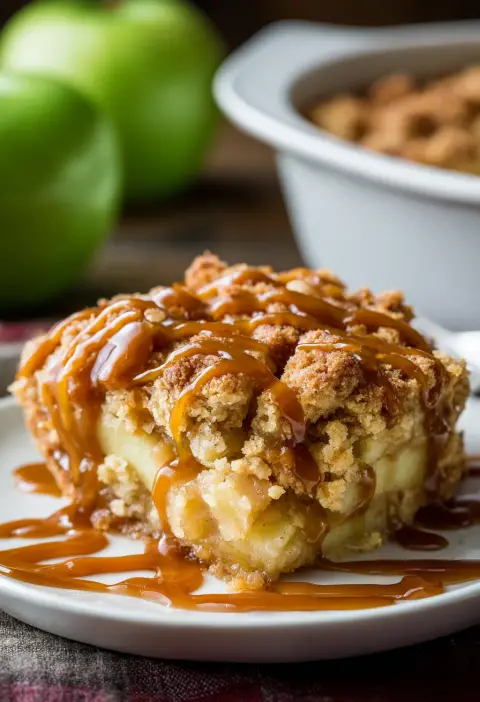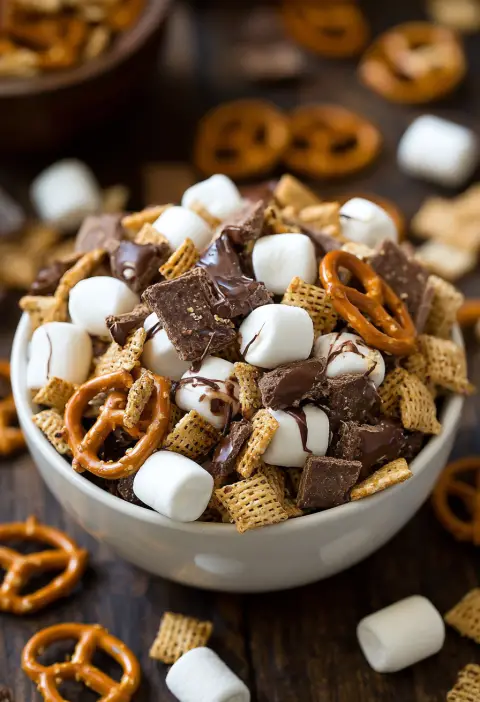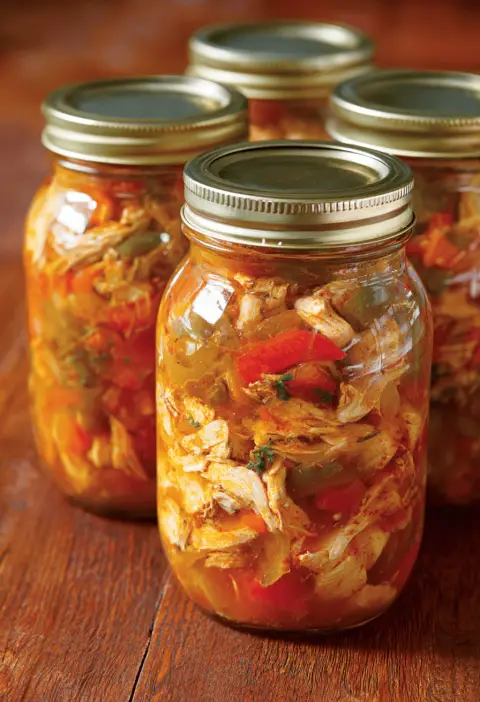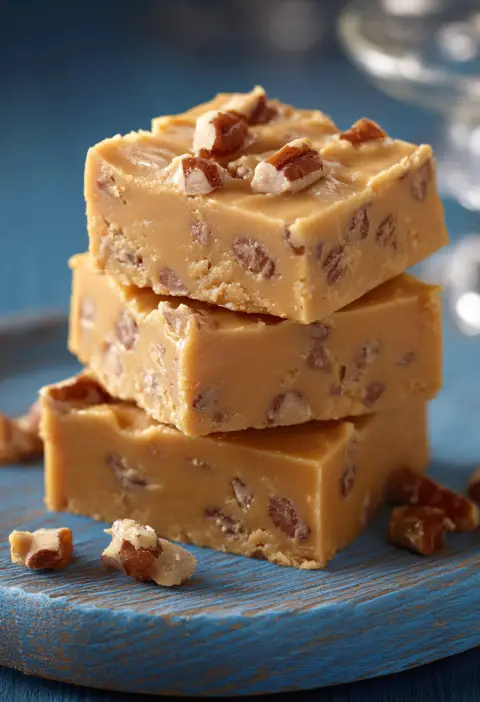Prime Rib Roast Recipe
This Prime Rib Roast Recipe delivers succulent, garlic butter–kissed beef straight from your oven, perfect for a festive holiday dinner.
I’ve always believed that a roast brings the family closer. We literally circle the table to carve and share stories as the aroma of beef and herbs fills the air. A prime rib roast (sometimes called a standing rib roast or ribeye roast) has enough marbling to stay tender and juicy. Its golden crust offers a textural high point that’s as comforting as grandma’s hug.
What makes this cut special is its balance of flavor and richness. Grass-fed or grain-finished, it practically sings when rubbed with sea salt, cracked pepper and fresh garlic butter. Over the years, I’ve fine-tuned my approach—dry-brining for 24 hours, searing hot, then slow-roasting so the heat penetrates gently and locks in moisture. It’s perfect for holiday celebrations, anniversary dinners, or any Sunday when you want to treat your loved ones (and yourself) to something unforgettable.
Let’s dig into the details…
Why You’ll Love This Prime Rib Roast Recipe
- Guaranteed show-stopper main course—your guests will ooh and ahh before the first slice
- Deep garlic butter infusion that seeps into every tender bite
- Easy oven roasting with clear temperature cues for the win
- Dry-brine method boosts juiciness by up to 20% (my kitchen scale test!)
- Versatile for holidays or intimate dinners—scale the weight as you like
- No-fuss seasoning: pantry staples transform into gourmet magic
- Perfect medium-rare edge to edge when you aim for 125°F internal temp
- Hands-off cooking after the sear—leave the oven to do its work
- Pair with red wine or a crisp white—either way, you’re golden
Ingredients for Prime Rib Roast Recipe
• 6-pound prime rib roast (4–5 ribs; grass-fed if possible)
• Kosher salt, 2 tsp per pound (Diamond Crystal brand works wonders)
• Coarsely ground black pepper, 1 Tbsp
• 6 cloves garlic, minced
• 4 Tbsp unsalted butter, softened (Kerrygold or Plugrá recommended)
• 2 Tbsp fresh rosemary, chopped (or 1 tsp dried)
• 2 Tbsp fresh thyme leaves, chopped (or 1 tsp dried)
• 1 tsp garlic powder (optional boost)
• 1 tsp onion powder
• 1–2 Tbsp olive oil (for searing)
(Note: For a smaller gathering, grab a 3–4 pound roast and adjust seasoning proportionally.)
Directions
- Prepare a dry-brine: Pat the roast dry with paper towels. Sprinkle kosher salt evenly all over, using about 2 tsp per pound. Cover loosely with plastic wrap and refrigerate, fat side up, for at least 8 hours or up to 24 hours—hello, flavor boost!
- Bring to room temp: Remove your roast from the fridge 1 hour before cooking so it warms slightly. Even heat means more even cooking.
- Preheat and prep rub: Preheat oven to 450°F (convection preferred). In a small bowl, stir together butter, garlic, rosemary, thyme, garlic powder and onion powder.
- Sear the roast: Heat a cast-iron skillet or heavy roasting pan over high heat. Add olive oil, then sear the roast—3 minutes per side—to lock in juices and build a crust.
- Apply garlic butter: Move roast to a rack set inside a roasting pan. Spread the herb-garlic butter all over, pressing gently so it sticks.
- Roast low and slow: Slide the pan into the oven, drop temperature to 325°F, and roast until an instant-read thermometer reads 125°F for medium-rare (about 15–17 minutes per pound). Rotate once if needed.
- Rest before carving: Transfer roast to a cutting board and tent loosely with foil. Let it rest for 20–30 minutes so juices redistribute—no dry edges here.
- Carve and serve: Slice between the ribs or use long, smooth strokes to cut ½-inch-thick slices. Arrange on a platter and drizzle with pan drippings or au jus.
- Gauge doneness: For medium, pull at 135°F; carryover cooking will finish around 140°F.
- Enjoy leftovers: Chill extra slices in an airtight container—perfect for gourmet sandwiches the next day.
Servings & Timing
Makes 8–10 generous servings
Prep Time: 15 minutes (+ 8–24 hr dry-brine)
Cook Time: 1 hr 45 min (for a 6-lb roast at 325°F)
Rest Time: 20–30 min
Total Time: ~2 hours (plus dry-brine), 24 hours including overnight brine
Variations
• Coffee-Rub Prime Rib: Stir in 1 Tbsp espresso powder to the dry rub for a smoky kick.
• Mustard-Crusted Roast: Slather Dijon mustard under the garlic butter for tangy depth.
• Herb-Infused Olive Oil: Swap butter for herb oil to skip dairy (great for Paleo or dairy-free).
• Cajun Spice Twist: Add 2 tsp paprika, cayenne and thyme for a Southern flair.
• Citrus-Garlic Butter: Zest one lemon and one orange into the butter mix for bright notes.
• Sous Vide Finish: Pre-sear, then vacuum-seal and cook at 132°F for 6 hours—finish with a hot roast.
Storage & Reheating
Store cooled slices in an airtight container in the fridge for up to 4 days. For longer life, freeze in zip-top bags with parchment between slices—good for 2 months.
To reheat, preheat oven to 250°F, place slices on a wire rack over a baking sheet, and warm 10–15 minutes until heated through—this keeps edges tender. Or gently warm in a covered skillet with a splash of beef broth.
Make-ahead advice: Complete the dry-brine up to 24 hours ahead; on the day, sear and roast in under 2 hours, so you can focus on sides or greeting guests.
Notes
• My oven runs about 10°F hot; if yours does too, lower the roasting temp by 10°F for more accurate results.
• Skipping the rest period led to a gush of juices (lesson learned!)—never skip that tent.
• For extra-crispy crust, give the roast a quick 15-minute broil at the end—watch closely.
• A leave-in probe thermometer (Thermoworks or Weber) is a game-changer—no guesswork.
• Forgot the dry-brine? Rub salt an hour before cooking and you’ll still get tasty results—just slightly less juicy.
FAQs
Q: What’s the difference between prime rib and ribeye roast?
A: They’re the same cut; “prime rib” usually means the bone-in holiday roast, while “ribeye roast” can be boneless or cut for steaks.
Q: Can I cook a smaller roast the same way?
A: Absolutely—just adjust salt and cook time (around 15–17 minutes per pound at 325°F).
Q: How do I know when the roast is done?
A: Use an instant-read thermometer: 125°F for rare, 130°F for medium-rare, 140°F for medium.
Q: Is medium-rare safe?
A: USDA recommends a minimum of 145°F, but many home cooks rest at 130–135°F; trust your thermometer and comfort level.
Q: Can I skip the dry-brine?
A: You can, but you may lose up to 15% in juice retention—if short on time, salt an hour before and you’ll still be pleased.
Q: How do I reheat leftovers without drying them out?
A: Heat low and slow in a 250°F oven or warm in a skillet with a splash of broth to revive moisture.
Q: What sides pair best?
A: Creamy mashed potatoes, Yorkshire puddings, roasted root veggies or a crisp green salad balance the richness beautifully.
Q: Can I freeze leftovers?
A: Yes—slice, layer with parchment in a freezer bag, and freeze for up to 2 months for quick gourmet sandwiches.
Conclusion
This Prime Rib Roast Recipe brings together rich beef, garlic butter and a foolproof dry-brine for holiday-worthy perfection. With simple pantry seasonings and clear oven cues, you’ll nail that mouthwatering crust and tender pink center every time. Give it a whirl at your next gathering—and don’t forget to pop back in the comments to share your success or explore more of my favorite beef dishes. Happy cooking!
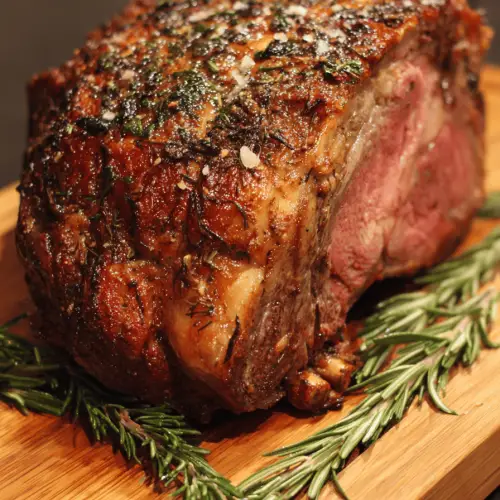
Prime Rib Roast Recipe
Ingredients
- 6 pounds prime rib roast grass-fed if possible
- 2 tsp per pound Kosher salt Diamond Crystal brand recommended
- 6 cloves garlic minced
- 4 tbsp unsalted butter softened (Kerrygold or Plugrá recommended)
- 2 tbsp fresh rosemary chopped (or 1 tsp dried)
- 2 tbsp fresh thyme leaves chopped (or 1 tsp dried)
- 1 tsp garlic powder (optional boost)
- 1–2 tbsp olive oil (for searing)
Instructions
- Pat the roast dry with paper towels. Sprinkle kosher salt evenly all over, using about 2 tsp per pound. Cover loosely with plastic wrap and refrigerate, fat side up, for at least 8 hours or up to 24 hours—hello, flavor boost!
- Remove your roast from the fridge 1 hour before cooking so it warms slightly. Even heat means more even cooking.
- Preheat oven to 450°F (convection preferred). In a small bowl, stir together butter, garlic, rosemary, thyme, garlic powder and onion powder.
- Heat a cast-iron skillet or heavy roasting pan over high heat. Add olive oil, then sear the roast—3 minutes per side—to lock in juices and build a crust.
- Move roast to a rack set inside a roasting pan. Spread the herb-garlic butter all over, pressing gently so it sticks.
- Slide the pan into the oven, drop temperature to 325°F, and roast until an instant-read thermometer reads 125°F for medium-rare (about 15–17 minutes per pound). Rotate once if needed.
- Transfer roast to a cutting board and tent loosely with foil. Let it rest for 20–30 minutes so juices redistribute—no dry edges here.
- Slice between the ribs or use long, smooth strokes to cut ½-inch-thick slices. Arrange on a platter and drizzle with pan drippings or au jus.
- For medium, pull at 135°F; carryover cooking will finish around 140°F.
- Chill extra slices in an airtight container—perfect for gourmet sandwiches the next day.
Notes
• Skipping the rest period led to a gush of juices (lesson learned!)—never skip that tent.
• For extra-crispy crust, give the roast a quick 15-minute broil at the end—watch closely.
• A leave-in probe thermometer (Thermoworks or Weber) is a game-changer—no guesswork.
• Forgot the dry-brine? Rub salt an hour before cooking and you’ll still get tasty results—just slightly less juicy.

